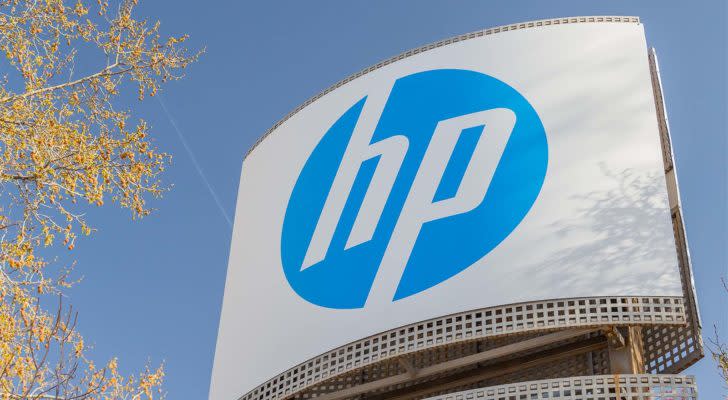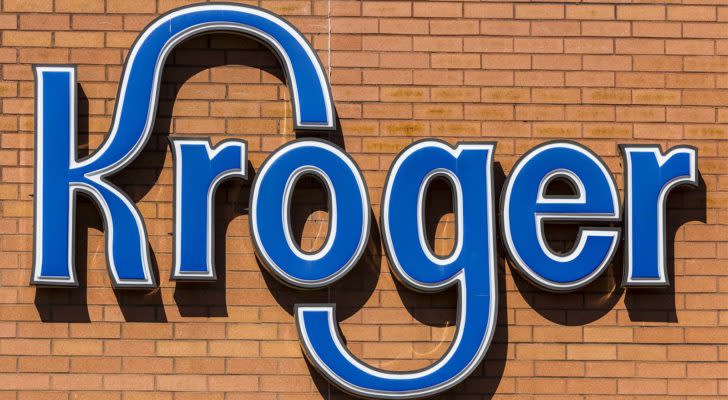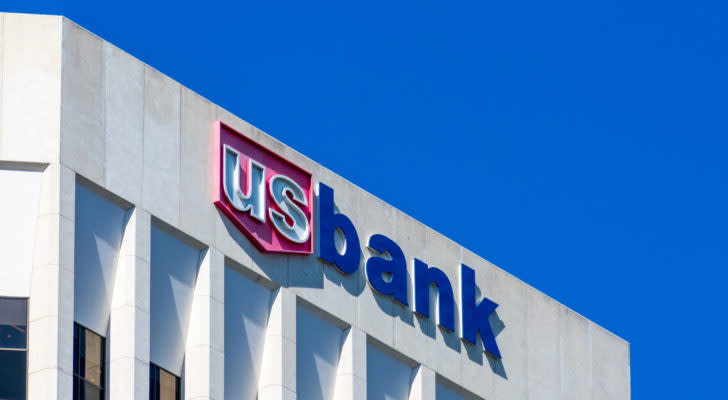7 Warren Buffet Stocks to Buy and Hold for the Next Decade
Editor’s note: This article is regularly updated with the latest information.
Today, our topic is Warren Buffett stocks to buy and hold. Each quarter, Buffett-led Berkshire Hathaway (NYSE:BRK-A, NYSE:BRK-B) releases current holdings as well as most recent transactions. Wall Street pays close attention to what the “Oracle of Omaha” buys and sells.
Amid this year’s bear market, red-hot inflation, increasing rates and geopolitical concerns, Buffett’s holdings become even more important for retail investors, many of whom invest in BRK-B stock in long-term portfolios. Berkshire shares have lost more than 5% since January. In comparison, the S&P 500 index has declined close to 17% so far this year.
InvestorPlace - Stock Market News, Stock Advice & Trading Tips
Investors can access Berkshire Hathaway’s 13F filings with the U.S. Securities and Exchange Commission (SEC) online. At the end of the second quarter, its portfolio value was worth more than $300 billion. Readers should also note that the largest holding of Buffett’s stocks is Apple (NASDAQ:AAPL), which comprises around 40% of the portfolio.
With that said, here are seven Warren Buffett stocks to buy and hold for the next decade:
Ally Financial (ALLY)

Source: JHVEPhoto/Shutterstock.com
52-week range: $31.66 – $56.28
Ally Financial (NYSE:ALLY) provides financial services, including car finance, online banking, corporate lending, vehicle insurance and mortgage loans. The company also offers an electronic trading platform for investors. As of the end of Q2, Warren Buffett and Berkshire owned 30 million shares of ALLY stock.
Ally put out Q2 results on July 19. For the period, adjusted total net revenue increased 4% year-over-year (YOY) to $2.22 billion. Adjusted earnings per share (EPS) also declined 24% YOY to $1.76 per share.
Ally Invest, the online brokerage and wealth management arm of Ally Financial, announced the launch of its Wealth Management advisory service back in May, available for a “minimum of $100,000 in investable assets.” With the new offering, Ally targets over 15 million U.S. households who do not meet the minimum $250,000 criteria typically required by most financial institutions.
ALLY stock has dropped 32% year-to-date (YTD), trading near its 52-week low. Yet, the price supports a generous 3.66% dividend yield.
As of this writing, shares are trading at a bargain 4.4 times forward earnings and 0.87 times book value. Analysts’ 12-month median price forecast for ALLY stands at $42 per share.
American Express (AXP)

Source: Shutterstock
52-week range: $134.12 – $199.55
American Express (NYSE:AXP) is a globally integrated payments company, serving both consumers and businesses. Within the U.S. credit card market, American has the third spot behind Visa (NYSE:V) and Mastercard (NYSE:MA). Around 6.8% of Buffett’s portfolio is in AXP stock.
American Express issued Q2 metrics on July 22. For the period, revenue surged 31% YOY to $13.4 billion. However, diluted EPS declined 8% to $2.57, compared to $2.80 in Q2 2021.
In July 2022, American Express and Marriott Bonvoy — Marriott International’s (NASDAQ:MAR) travel program — unveiled changes to the small business card offering with renewed travel, business and global dining rewards. Following months of Covid-19 lockdowns, this is an example of numerous steps that American Express and its travel partners are taking to boost top-line growth.
So far in 2022, AXP stock has declined 8%, while the current price supports a dividend yield of 1.34%. Shares trade at 16 times forward earnings and 4.9 times book value. AXP has a 12-month median price forecast of $175 per share.
Bank of America (BAC)

Source: Tero Vesalainen / Shutterstock.com
52-week range: $29.67 – $50.11
Bank of America (NYSE:BAC) is one of the largest financial institutions in the United States and comprises about 10% of Buffett’s portfolio. By asset size, it has the second spot behind JPMorgan Chase (NYSE:JPM).
This banking giant released Q2 results on July 18. Revenue increased 6% YOY to $22.7 billion during the period. Diluted EPS came in at 73 cents as well, compared to $1.03 per share in the prior-year quarter. Furthermore, net interest income grew 22% YOY to $12.4 billion, driven by higher interest rates, lower premium amortization and loan growth.
In June 2022, Bank of America announced that its Virtual Account Management (VAM) solution would become available to U.S. companies. Now, these companies can “open virtual accounts that act as sub-ledger accounts tied to a physical account.” Investors will be keen to see the results of BC’s steps to increase its reach with business customers.
BAC stock has lost 24% YTD while supporting a dividend yield of 2.63%. Shares are trading at 10.57 times forward earnings and 1.13 times book value. Meanwhile, its 12-month median price forecast stands at $42 per share.
HP (HPQ)

Source: Shutterstock
52-week range: $26.11 – $41.47
HP (NYSE:HPQ) is one of the leading computer hardware manufacturers in the world. The tech giant is primarily known for its personal computers (PCs), printers and mobile devices.
In terms of PC unit shipment share, HP’s U.S. market share is well over 20%. Buffett holds 104 million shares of HPQ stock, making the company on of Berkshire’s largest tech stakes.
Management reported Q3 results on Aug. 30. For the period, net revenue decreased 4.1% YOY to $14.7 billion. Diluted net EPS also jumped 17% YOY to $1.08 per share. Finally, free cash flow (FCF) came to $300 million.
In terms of individual segments, revenue from personal systems decreased 3% YOY to $10.1 billion, while revenue from the printing business declined 6% YOY.
So far in 2022, HPQ stock has fallen 26%, yet the current price supports a dividend yield of 3.55%. Shares are trading at 6.7 times forward earnings and 0.48 times sales. Wall Street’s 12-month median price forecast for HP is $31 per share.
Kroger (KR)

Source: Jonathan Weiss / Shutterstock.com
52-week range: $38.22 – $62.78
Leading supermarket chain Kroger (NYSE:KR) controls around 8% of the U.S. grocery market, as of 2021. However, shares of KR stock currently comprise around 0.81% of Buffett’s portfolio.
Kroger released Q1 results in June. For the period, total revenue came in at $44.6 billion, compared to $41.3 billion in Q1 2021. Excluding fuel, identical sales increased 4.1% YOY as well. Adjusted EPS came in at $1.45 compared to $1.19 per share last year.
In July 2022, Kroger announced the launch of Boost by Kroger, the latest expansion of the company’s loyalty program. The annual membership provides customers “unlimited free grocery delivery on orders of $35 or more” as well as “fuel discounts of up to $1 per gallon.”
Management estimates this membership can save customers more than $1,000 a year on fuel and grocery delivery. Meanwhile, Wall Street will be paying close attention to how the loyalty program helps Kroger’s top line.
KR stock is up 7% since the beginning of the year. The current price supports a dividend yield of 2.17%. Shares are trading at an attractive 11.98 times forward earnings and 0.25 times sales. Meanwhile, the 12-month median price forecast for KR stands at $53 per share.
Marsh & McLennan (MMC)

Source: Shutterstock
52-week range: $142.80 – $183.14
Professional services group Marsh & McLennan (NYSE:MMC) focuses on risk management, insurance brokerage, investment advisory and management consulting. Berkshire owns around 404,000 shares of MMC stock.
MMC put out Q2 results on July 21. For the quarter, consolidated revenue was $5.4 billion, up 7% YOY. Adjusted EPS rose 8% YOY to $1.89 per diluted share as well, compared with $1.75 the prior year.
This summer, the company acquired two independent insurance agencies in Maine and Chicago, indicating dedication to continuous growth. According to a recent study, global insurance premiums are set to rise to $4.3 trillion by 2040 with a compound annual growth rate (CAGR) of 4.3%. Marsh & McLennan is likely to benefit from this expansion.
MMC stock has declined 7% YTD but has also gained nearly 2% over the past 12 months. The current price level supports a dividend yield of 1.45%. Shares trade at 24.6 times forward earnings and about 4 times sales. Wall Street’s 12-month median price forecast for MMC is at $179 per share.
US Bancorp (USB)

Source: Michael Vi / Shutterstock.com
52-week range: $43.75 – $63.57
US Bancorp (NYSE:USB) is the the fifth-largest bank stateside, with around $590 billion in assets. Buffett owns around 120 million shares of USB stock.
The bank put out Q2 results in mid-July. Revenue came in at $6.01 billion for the period. Diluted EPS was 99 cents as well, compared to $1.28 in the year-ago quarter. Finally, $3.46 billion of revenue was derived from net interest income (NII), while $2.55 billion came from non-interest income.
Effective June 16, US Bancorp increased its prime lending rate to 4.75% from 4%, in-line with ongoing interest rate hikes from the Federal Reserve. Investors expect the top line to benefit from this increase.
USB stock has lost 18% YTD, yet the current price supports a dividend yield of a robust 4.03%. Shares are trading at 10.68 times forward earnings and 1.63 times book value. Finally, the 12-month median price forecast for USB stock stands at $54 per share.
On the date of publication, Tezcan Gecgil did not hold (either directly or indirectly) any positions in the securities mentioned in this article. The opinions expressed in this article are those of the writer, subject to the InvestorPlace.com Publishing Guidelines.
Tezcan Gecgil has worked in investment management for over two decades in the U.S. and U.K. In addition to formal higher education in the field, she has also completed all 3 levels of the Chartered Market Technician (CMT) examination. Her passion is for options trading based on technical analysis of fundamentally strong companies. She especially enjoys setting up weekly covered calls for income generation.
More From InvestorPlace
Early Bitcoin Millionaire Reveals His Next Big Crypto Trade “On Air”
It doesn’t matter if you have $500 or $5 million. Do this now.
The post 7 Warren Buffet Stocks to Buy and Hold for the Next Decade appeared first on InvestorPlace.

 雅虎香港財經
雅虎香港財經 